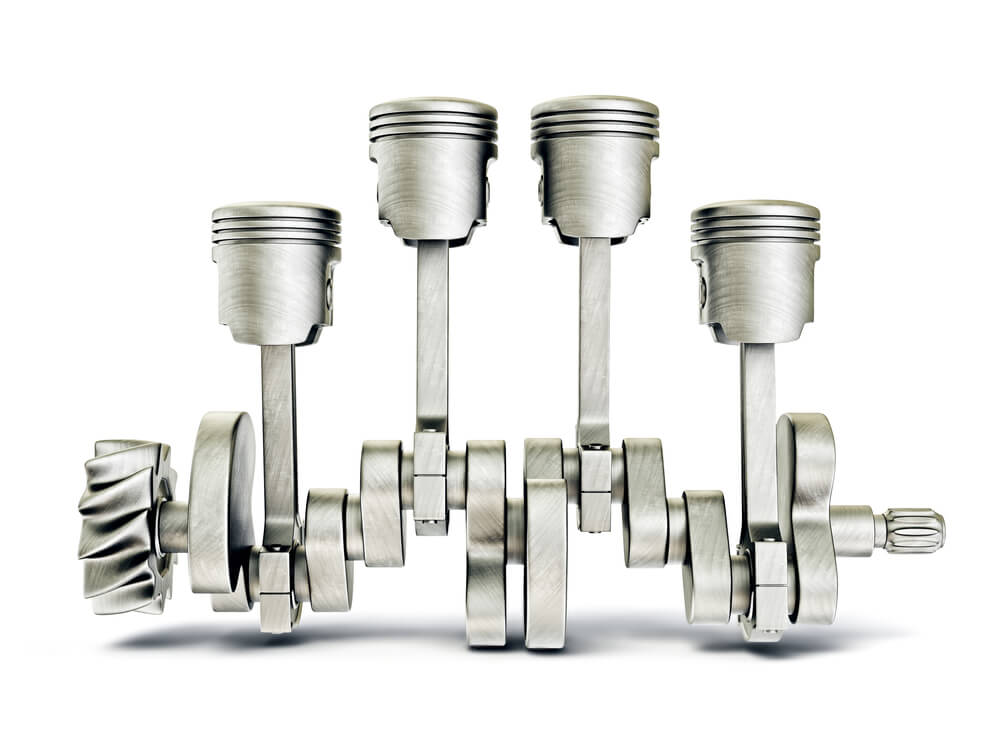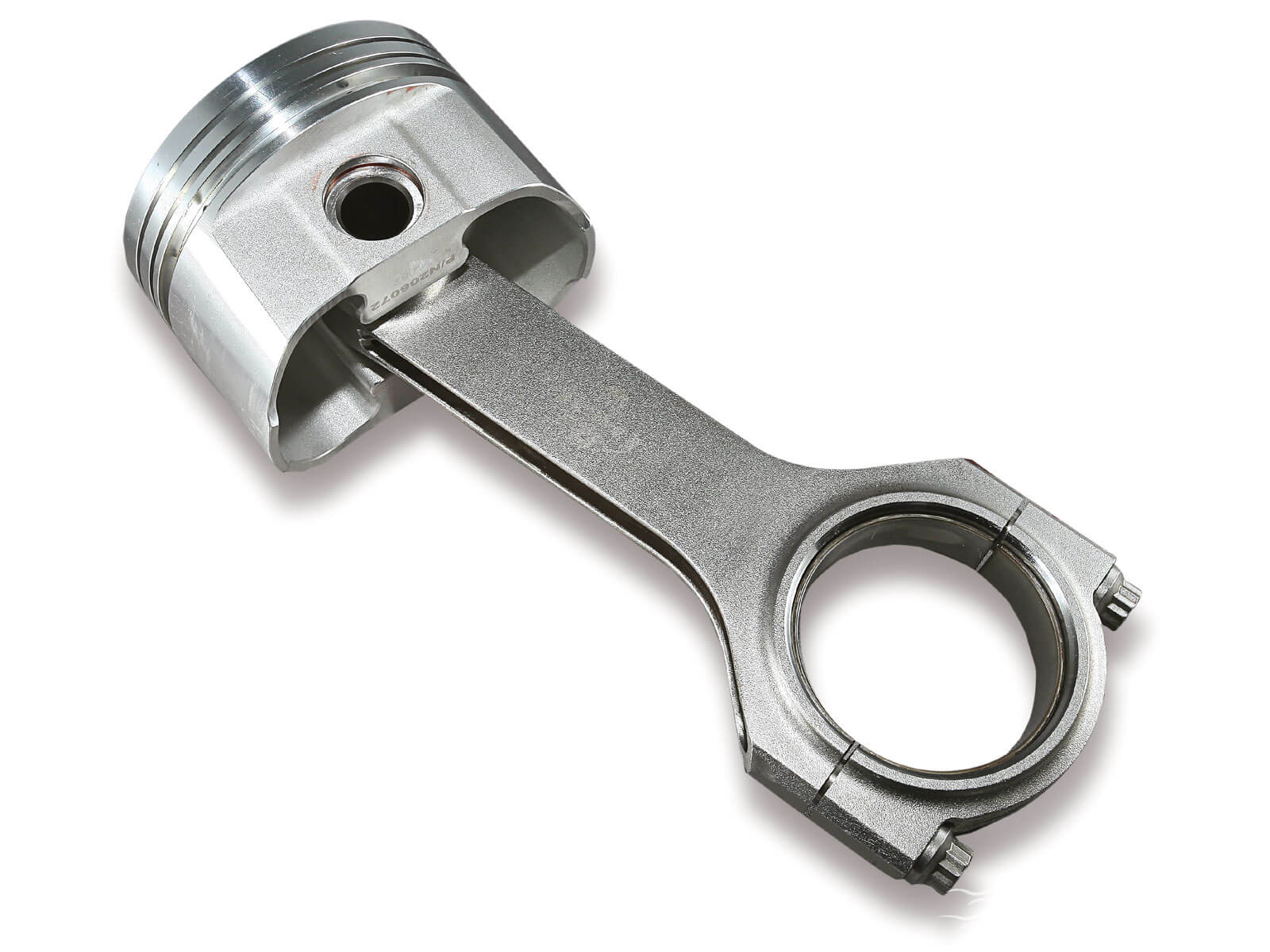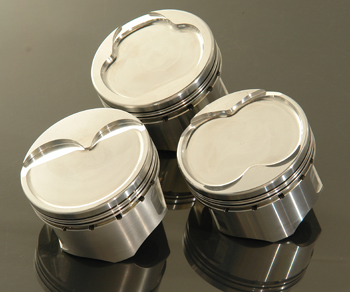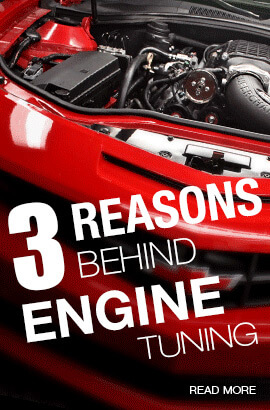
Your car engine is an internal combustion engine. Gasoline or diesel is burned inside the engine, transforming chemical energy to mechanical energy. Inside the engine are cylinders. The number of cylinders depends on the type of engine that your car has. Most car engines have four cylinders. Inside these cylinders is where you find the pistons. The pistons move up and down inside these cylinders through fuel combustion. Fuel is injected into the cylinder and then combusted, forcing the piston to go down. The combustion is done at a very fast interval in all cylinders. The piston is connected to a connecting rod which is then connected to the crankshaft. The crankshaft is designed to convert the up and down motion of the pistons to a rotating motion. The downward movement of one piston will force another piston to go up, thus, continuing the up and down motion of pistons and then producing the rotating movement of the crankshaft.

There are two ways that an internal combustion piston engine can transform combustion into motive power: the two-stroke cycle and the four-stroke cycle. A single-cylinder two-stroke engine produces power every crankshaft revolution, while a single-cylinder four-stroke engine produces power once every two revolutions. Older designs of small two-stroke engines produced more pollution than four-stroke engines. However, modern two-stroke designs, like the Vespa ET2 Injection utilise fuel-injection and are as clean as four-strokes. Large diesel two-stroke engines, as used in ships and locomotives, have always used fuel-injection and produce low emissions. One of the biggest internal combustion engines in the world, the Wartsila-Sulzer RTA96-C is a two-stroke; it is bigger than most two-storey houses, has pistons nearly 1 metre in diameter and is one of the most efficient mobile engines in existence. In theory, a four-stroke engine has to be larger than a two-stroke engine to produce an equivalent amount of power. Two-stroke engines are becoming less common in developed countries these days, mainly due to manufacturer reluctance to invest in reducing two-stroke emissions. Traditionally, two-stroke engines were reputed to need more maintenance (despite exceptions like the Ricardo Dolphin engine, and the Twingle engines of the Trojan car and the Puch 250 motorcycle). Even though the simplest two-stroke engines have fewer moving parts, they could wear out faster than four-stroke engines. However fuel-injected two-strokes achieve better engine lubrication, also cooling and reliability should improve considerably.

The piston goes through four cycles namely; intake, compression, ignition and exhaust. During the intake stage, air or a mixture of fuel and air is admitted in to the cylinder. The air goes through the valve which is opened and closed by the camshaft. Compression happens when the piston goes up, compressing the air or air and fuel mixture. Ignition then follows. Ignition is done in two ways. With a diesel engine, ignition is done by injecting fuel to the heated compressed air in the cylinder. While in a gasoline engine, ignition is achieved through a sparkplug. After ignition, the exhaust stage happens. Burned gases are pushed out by the piston that is going up. Pistons are generally made with the same material that makes up the engine block. The piston is designed to withstand the whole process of combustion when the engine is running. One important substance that ensures engines health is oil. Engine oil lubricates the moving parts of the engine including the piston. Aside from this the cooling system of your engine is also paramount in maintaining the health of your car engine.
Since the pistons are the main reciprocating accessories of an engine, their movement creates an imbalance. This imbalance generally manifests itself as a vibration, which causes the engine to be perceivably harsh. The friction between the walls of the cylinder and the piston rings eventually results in wear, reducing the effective life of the mechanism. The piston rarely gets damaged, but once it is damaged or cracked, nothing could be done but to replace it. The piston does not come in contact with the engine block. Piston rings are fitted on the piston. These rings seal the combustion chamber, lessen the friction of the piston with the wall and regulate the oil in the cylinder. These rings are the ones that are usually damaged because of wear. Once these rings are damaged, the piston comes in contact with the block, thus, increasing heat and friction. Damaged rings also let combusted energy escape, thus, decreasing the efficiency of the engine. It is also the main cause of dark exhaust smoke which comes from oil that gets through the combustion chamber and getting burned.



